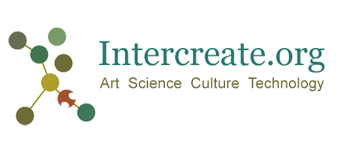
psworld 2010/11, Julian Oliver, Software and hardware
psworld is work of ‘philosoftware’. It began as a modification of the utility, ‘ps’, found on all UNIX and UNIX-like operating systems. ps is used by people and programs to quickly sort and print a table of processes that are running on a computer. psworld maps these processes onto visual features in the world, creating a perceptual dependence between a computer and the world around it. As the computer’s visible surroundings change, the instability of the operating system increases.
An example: a computer running psworld is in a park watching a bird in a tree. If the process ‘Firefox’ is attached to the bird’s head and the bird suddenly flies away, Firefox will be terminated on the computer. Similarly, a breakfast scene may include many processes attached to various edibles on the table. As breakfast is eaten, dependent processes on the computer will be terminated.
Please see the artist’s site for the full description of this project.
Julian Oliver CV and bio
Julian Oliver is a New Zealand artist based in Berlin. He has been active in the critical intersection of art and technology since 1998. His projects and the occassional paper have been presented at many museums, international electronic-art events and conferences, including the Tate Modern, Transmediale, Ars Electronica and the Japan Media Arts Festival. His work has received several awards, ranging from technical excellence to artistic invention and interaction design.
Julian has given numerous workshops and master classes in software art, augmented reality, creative hacking, data forensics, object-oriented programming for artists, virtual architecture, artistic game-development, information visualisation, UNIX/Linux and open source development practices worldwide. He is a long-time advocate of the use of free software in artistic production, distribution and education.
Recent Awards
2011 Excellence Prize (Art category), Japan Media Art Festival
2010 Award of Distinction (Hybrid Arts category), Prix Ars Electronica
Third Prize, Fundacion Telefonica, VIDA 13.0 Art and Artifical Life awards.
First Prize, Jeux Vidéo et Attractions, Laval Virtual.
2008 Technical Innovation award, Indiecade
The New Zealand Open Source Award
Honorary Mention (Interactive Arts category), Prix Ars Electronica
Jury Reccommended Work (Entertainment Division), Japan Media Arts Festival
2004 Honorary Mention, Transmediale
Recent exhibitions, talks, workshops
2010 Improved Reality lecture, Stedelijk Museum, Amsterdam.
psworld at ‘moddr_*’, iMAL, Brussels (curated by moddr_).
ioq3aPaint at ‘Virtual Rebellion’, KOP, Breda, Netherlands.
The Artvertiser, Beeldfestival (augmented street exhibition and talk), Rotterdam
Improved Reality lecture, Migrating Art Academies conference, C.H.B, Berlin.
The Artvertiser, Media Facades Festival Europe 2010 (workshop and augmented
street exhibition), Brussels
The Artvertiser, ‘Stadt am Rande’, Goethe Institut, Beijing
levelHead at The Lighthouse, Brighton
levelHead at Space Invaders, Netherlands Institut voor Mediakunst, Amsterdam
M.I.G at Worm Space, MuseumsQuartier, Vienna
‘Improved Reality’ paper and presentation, TEDx, Rotterdam
‘The Great Augmented Goldrush’: a Reality-check for Artists’. Presentation, V2, Rotterdam
ioq3aPaint at 26th edition of ‘Art Amsterdam’, Amsterdam
Six Composite Acts, MMX Gallery, Berlin
The Artvertiser (at the Murcia stand), ARCO, Madrid
The New Arena Paintings (solo show), Hannah Maclure Centre, Dundee, Scotland
The Artvertiser at Transmediale 2010, Berlin
‘The Not So Brief History of Sound Based Games’, artist talk, A-MAZE Festival, Berlin
2009 levelHead at Space Invaders, FACT, Liverpool, U.K
levelHead at Over The Game, Zemos98, Seville, Spain
The Atocha 24 Insertions, HAMBRE (group show) Madrid
levelHead at TWEAKFEST, Zurich, Switzerland
levelHead, Award and exhibition, LAVAL VIRTUAL, Laval, France.
levelHead at Art Rock festival, St Brieuc, France
The Artvertiser workshop, Cartagena, Spain
Composite City, Paper presentation, See Festival, Wiesbaden, Germany
levelHead at Mois Multi, Quebec City, Canada.
levelHead at the Japan Media Art Festival, National Art Center, Tokyo, Japan
levelHead at the Ars Electronica Center, Linz, Austria (opening exhibition ofnew center).







